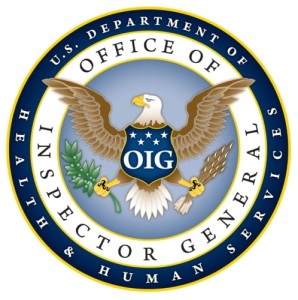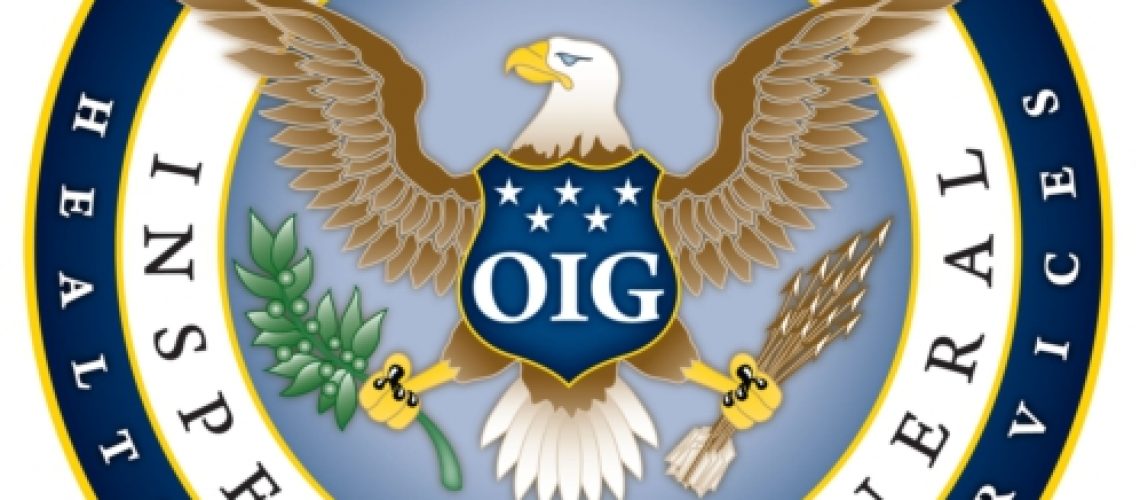 On May 29, 2014, the Department of Health and Human Services Office of Inspector General (OIG) released a report, Improper Payments for Evaluation and Management Services Cost Medicare Billions in 2010.
On May 29, 2014, the Department of Health and Human Services Office of Inspector General (OIG) released a report, Improper Payments for Evaluation and Management Services Cost Medicare Billions in 2010.
Evaluation and management (E/M) services are visits performed by physicians and non-physician practitioners to assess and manage a patient’s health, and the OIG study is part of a larger body of work (and continuing scrutiny) focusing on these services.
In 2006, OIG reported that 75 percent of consultations in 2001 did not meet Medicare coverage requirements resulting in $1.1 billion in improper payments, and that consultations billed for at the highest level were miscoded 95 percent of the time. (Consultations in Medicare: Coding and Reimbursement (OEI-09-02-00030), March 2006.) Tellingly, in 2010, the Centers for Medicare & Medicaid Services (CMS) discontinued paying for Current Procedural Terminology (CPT) codes for consultations. 74 Fed. Reg. 61,738, 61,768–69 (Nov. 25, 2009).
In 2011, through the Comprehensive Error Rate Testing (CERT) program, CMS found that E/M services were 50 percent more likely to be paid for in error than other Part B services. In 2012, an OIG study concluded that from 2001 to 2010, physicians had increased their billing of higher level codes for these services in all visit types. (Coding Trends of Medicare Evaluation and Management Services (OEI-04-10-00180), May 2012).
In 2010, E/M services accounted for nearly 30 percent of Part B claims, or $32.3 billion in Medicare payments. The OIG reports that 21 percent of the claims, or $6.7 billion in payments, were improper. The OIG also found that claims from high-coding physicians were more likely to be incorrectly coded or insufficiently documented than claims from other physicians.
E/M services are divided into broad categories, or visit types, reflecting the type of service, the place of service, and the patient’s status. Most visit types are further divided into three to five levels, reflecting the complexity of a visit and corresponding to CPT codes for billing purposes. The level of the E/M service is based on: patient history, physical examination, medical decision-making, counseling, coordination of care, the nature of the patient’s presenting problem(s), and time. The physicians’ documentation must support the medical necessity and level of the E/M service.
The OIG reviewed a random sample of claims for E/M services from physicians who had claims for 100 or more services, stratifying claims from physicians who consistently billed higher level codes for E/M services and claims from other physicians. The high-coding physicians were identified as those whose average code level was in the top one percent of their primary specialty, and from that group, those who billed for the two highest level codes at least 95 percent of the time. The sampling frame consisted of 369,629,103 claims for $32.3 billion in Medicare payments. From this, the OIG selected a stratified random sample of 673 claims (309 from high-coding physicians and 364 from other physicians). With a final study sample of 657 claims, however, the OIG projected its overall results to 98.6 percent of the Medicare claims or $31.5 billion of the $32.3 billion in total payments for E/M services in 2010.
The OIG found that 55 percent of claims were incorrectly coded and/or lacking documentation. Medicare paid $6.7 billion for these claims, representing 21 percent of Medicare payments for E/M services in 2010. In particular, 26 percent were upcoded and 15 percent were downcoded. Additionally, nearly 7 percent of claims for E/M services in 2010 were both incorrectly coded and insufficiently documented. Two percent of claims had coding errors other than upcoding or downcoding, including wrong codes (i.e., when the documentation in the medical record supported codes for non-E/M services)—and unbundling (i.e., the practice of inappropriately reporting each component of a service or procedure instead of reporting the single, comprehensive code). Twelve percent of claims were insufficiently documented, and seven percent were undocumented.
Claims billed for by high-coding physicians were more likely to be incorrectly coded, with 56 percent of these incorrectly coded. Ninety-nine percent of high-coding physicians’ miscoded claims were upcoded, while less than 1 percent were downcoded. In contrast, forty-two percent of E/M services claims by other physicians were incorrectly coded. Of these, sixty-four percent were upcoded, while 36 percent were downcoded. Similarly, claims by high-coding physicians were more likely to be insufficiently documented than those billed for by other physicians, with twenty percent of high-coding physicians’ claims insufficiently documented, compared to 12 percent from other physicians.
Based on its findings, OIG recommended that CMS (1) educate physicians on coding and documentation requirements for E/M services, (2) continue to encourage contractors to review E/M services billed for by high-coding physicians, and (3) follow up on claims for E/M services that were paid for in error. CMS concurred with the first recommendation, did not concur with the second recommendation, and partially concurred with the third recommendation.
Interestingly, CMS’s refusal to concur with the OIG’s recommendation that contractors be encouraged to review E/M services billed by high-coding physicians was attributed to its previous experience reviewing claims referred by OIG for what CMS termed “a negative return on investment.” Still, CMS agreed to reassess the effectiveness of reviewing claims billed by high-coding physicians as compared to other efforts, such as Comparative Billing Reports. Acknowledging that CMS “must weigh the costs and benefits of reviewing claims for E/M services against doing so for more costly Part B services,” the OIG urged CMS to focus on those services billed for by high-coding physicians, “as these claims are more likely to be in error than claims for E/M services billed for by other physicians.”
CMS’s partial concurrence with OIG’s third recommendation to follow up on claims that had been paid in error was similarly qualified, with the agency agreeing to “analyze each overpayment to determine which claims exceed its recovery threshold and can be collected consistent with its policies and procedures.”
While it is not clear that CMS’s reservations on these points reflects a concern or doubt that OIG’s projected analysis of the improper payments is borne out by closer analysis, it is clear that the agencies differed in their interpretation of the results and the proper follow up. Nonetheless, the OIG’s strong emphasis on the claims by high-coding physicians, coupled with its referral of these payments to CMS for further review, indicates that these physicians can expect stricter scrutiny in the future.
——————————————————
Prepare For The Medical Coding Certification Exam Here!
Originally published on: Lexology.com
Follow Medical Coding Pro on Twitter: www.Twitter.com/CodingPro1








This Post Has One Comment
Pingback: OIG Finds Improper Payments Cost Medicare Billions | scrubs and suits
Comments are closed.